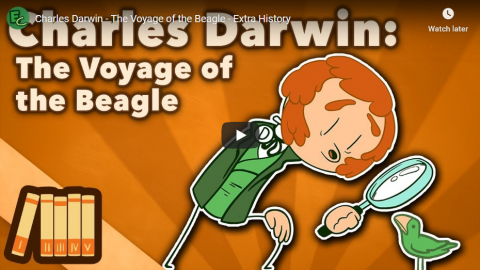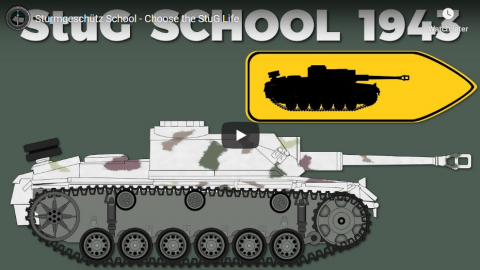Extra Credits
Published 29 Sep 2019The 1830s were an exciting time for science. All throughout Europe, there was a great movement to explore, map, and classify the world. And it was this expanding world that young Charles Darwin graduated into … albeit with the wrong degree. Because although he would one day be known as “the Father of Modern Biology,” Darwin’s father was set on his son following in his footsteps — as a doctor.
October 1, 2019
Charles Darwin – The Voyage of the Beagle – Extra History
Bring back the Aurochs!
L. Neil Smith has a dream, and it includes lots and lots of barbecue sauce:
The aurocs, you probably know, was a kind of wild bovine critter that lived and flourished in fairly recent prehistoric times. It ranged all over the Old World, from Japan and what became Sahara country, to Europe, where it first showed up about 270,000 years ago. (Homo sapiens arrived there about 100,000 years ago, when Adam and Eve got expelled from the Garden of Africa.
The aurocs is the number one game animal depicted lovingly in cavemens’ wet dreams, as painted by torchlight on the walls of certain caves, notably in France. I don’t know why French cavemen produced the most beautiful paintings in the world, but the genetic thread seems to have run true from 40,000 years ago, straight to Henri Toulouse-Lautrec, Paul Gauguin, and Claude Monet. Our ancestors hunted wooly mammoths, too — it must have seemed to them as massive an undertaking as the Space Progran — but I don’t think I’ve ever seen one depicted on a cave wall.
[…]
Julius Caesar described aurochs in Volume III of his Gallic Wars — another French connection, coinzidenza? The last one died, regrettably, in 1627, in a forest in Poland, but I recently learned to my delight that aurochs DNA abounds in the world’s laboratories (it’s found in their bones), and the entire genome has been mapped. It wouldn’t be much of a feat to plant some of it in the egg cell of a closely related descendant species — say an Indian cow — and bring it to term. It would certainly be less ambitious than trying to resurrect wooly mammoths (a favorite scientific undertaking of mine) and a hell of a lot more practical — and profitable.
Imagine, if you can, the Wyoming prairie (my wife is from Wyoming, the original Marlboro Girl, and as inveterate a Westerner as I am) or the flatlands of northern Texas, blackened from horizon to horizon, not with American bison (although I like them, too — yummy!) but with archaic European aurochs. Fifteen hundred pounds of politically incorrect red meet, stamping around, munching the prairie grass, paying court to the lady aurochs and doing whatever else aurocs did when Fred Flintstone and Ringo Starr were wandering the countryside with flint-tipped spears in their hands and growling stomachs under their aurochs-hide Speedos.
So that’s my idea, friends and readers. Resurrect the first big game animal our distant ancestors likely ever hunted and ate. It should prove to be a highly profitable enterprise. We may even discover that we have a genetic affinity for aurocs meat. Perhaps we’ll be less likely to gather deadly fat in our arteries, chowing down on the creature we evolved to consume.
Pass the barbecue sauce, please, and in any case, Bring Back The Aurochs!
Sturmgeschütz School – Choose the StuG Life
Military History Visualized
Published on 20 Aug 2019I got my hands-on information for you. Namely from the “Sturmgeschütz School Teaching Staff” (Sturmgeschütz Schule Lehrstab), which in October 1943 published a leaflet (“Merkblatt“) for the crews of the Sturmgeschütze. I looked at it and selected some crucial and interesting aspects for you.
StuG footage recorded at Militracks 2019 at the Overloon War Museum: https://www.militracks.nl – https://www.oorlogsmuseum.nl/en/home/
» SOURCES «
Wettstein, Adrian: Sturmartillerie Geschichte einer Waffengattung
http://portal-militaergeschichte.de/s…Condell, Bruce (ed.); Zabecki, David T. (ed.): On the German Art of War. TRuppenführung. Stackpole Books: Mechanicsburg, PA, USA, 2009 (2001)
amazon.com (affiliate link): https://amzn.to/2yTSjmI
amazon.de (affiliate link): https://amzn.to/2MOicwJCAMO: F. 500, Op. 12480, D. 137: Sturmgeschütz-Schule Lehrstab: Merkblatt – Die Geschützbedienung, Burg b. M., Oktober 1943.
Spielberger, Walter; Doyle, Hilary Lous: Sturmgeschütze: Entwicklung und Fertigung der sPak. Motorbuch Verlag: 2014.
amazon.de (affiliate): https://amzn.to/2HUvXJ1
Spielberger, Walter: Sturmgeschütz & Its Variants: (Spielberger German Armor & Military Vehicles Series, Vol 2)
amazon.com (affiliate): https://amzn.to/2HY2utAFleischer, Wolfgang: Die deutschen Sturmgeschütze 1935-1945. Podzun-Pallas, 1996.
amazon.com (affiliate link): https://amzn.to/2UgyeDv
amazon.de (affiliate link): https://amzn.to/2HLc8DqBuchner, Alex: Das Handbuch der deutschen Infanterie 1939-1945; Gliederung – Uniformen, Bewaffnung – Ausrüstung, Einsätze. Podzun-Pallas: Friedberg in Hessen, Germany, 1987
amazon.de (affiliate link): https://amzn.to/2O0TENR
ENGLISH VERSION: Buchner, Alex: The German Infantry Handbook 1939-1945.
amazon.com (affiliate): http://amzn.to/1l4ABU0Pöhlmann, Markus: Der Panzer und die Mechanisierung des Krieges: Eine deutsche Geschichte 1890 bis 1945. Ferdinand Schöningh: Paderborn, 2016.
amazon.de (affiliate): http://amzn.to/2ELyDX1» DISCLAIMER «
As an Amazon Associate I earn from qualifying purchases.Als Amazon-Partner verdiene ich an qualifizierten Käufen.
QotD: The Great Patriotic War
Even by the usual standards of historical irony, it remains astonishing that Hitler’s June 1941 invasion of the Soviet Union not only failed to destroy Bolshevism, but instead conferred a new legitimacy on Stalin’s dictatorship, and probably protracted by a generation the existence of his empire. Successful resistance to Hitler was only possible because of the Soviet leader’s industrialisation programme, which had been carried out at appalling human cost.
The Russian people’s 21st-century notion of what they call “the Great Patriotic War” bears little relationship to our own. It ignores Stalin’s 1939-41 pact with Hitler, and the fact that the Luftwaffe planes that bombed London in the Blitz were powered by Russian fuel. President Putin has made unlawful all published mention of the unspeakable cruelties the Soviet regime inflicted on its own citizens — shooting an estimated 300,000 soldiers for alleged desertion or cowardice — in order to prevail. Antony Beevor’s books, and for that matter my own, are nowadays banned because they describe the Red Army’s 1945 campaign of rape and pillage in Germany.
I have argued elsewhere that the ruthlessness of Stalin’s tyranny was essential to contrive the defeat of Hitler’s tyranny; that if the liberation of Europe had proceeded at a pace determined by the US and British armies, we might still stand short of the Elbe.
Max Hastings, “The centenary of the Russian revolution should be mourned, not celebrated”, The Spectator, 2016-12-10.






